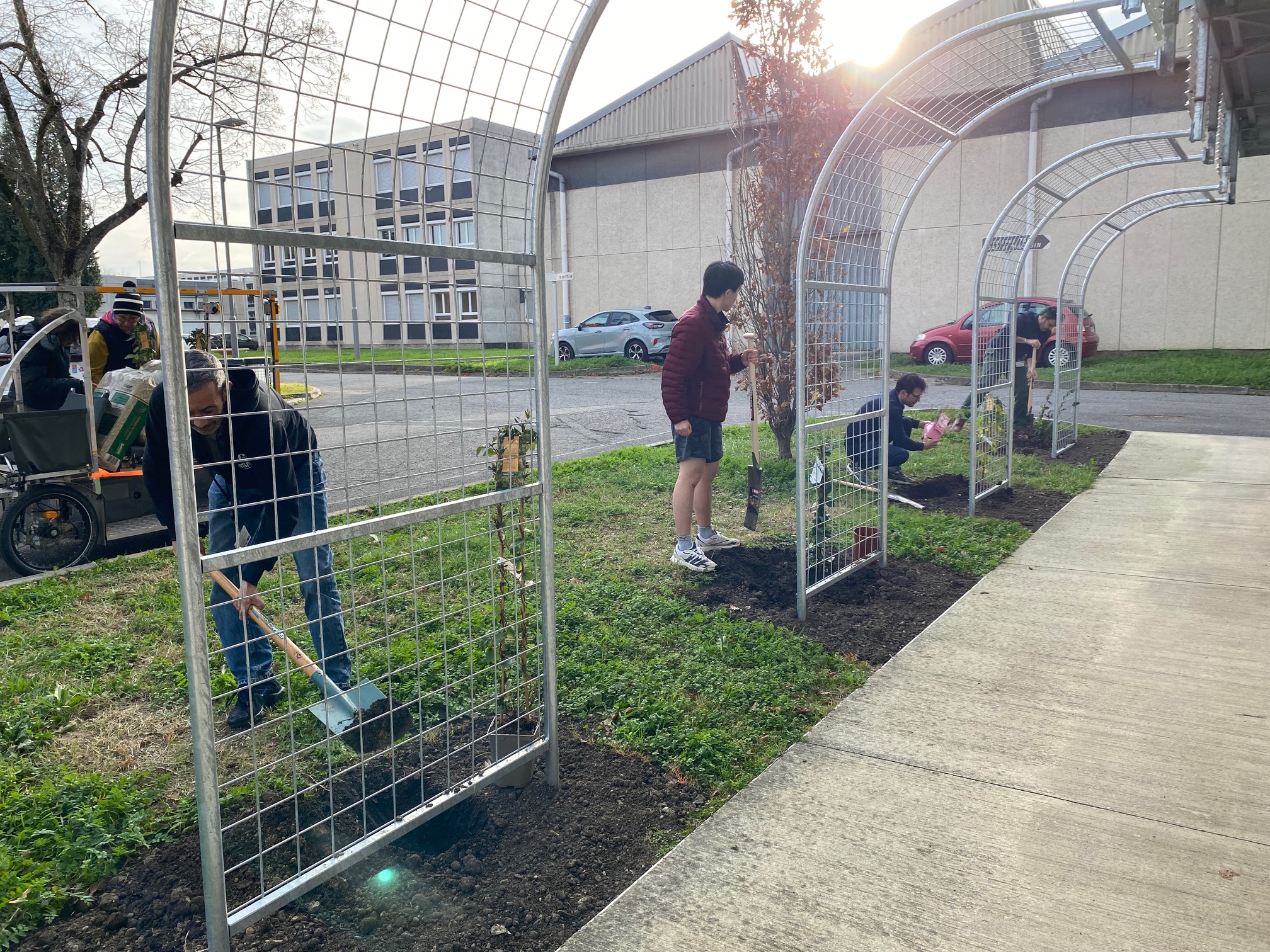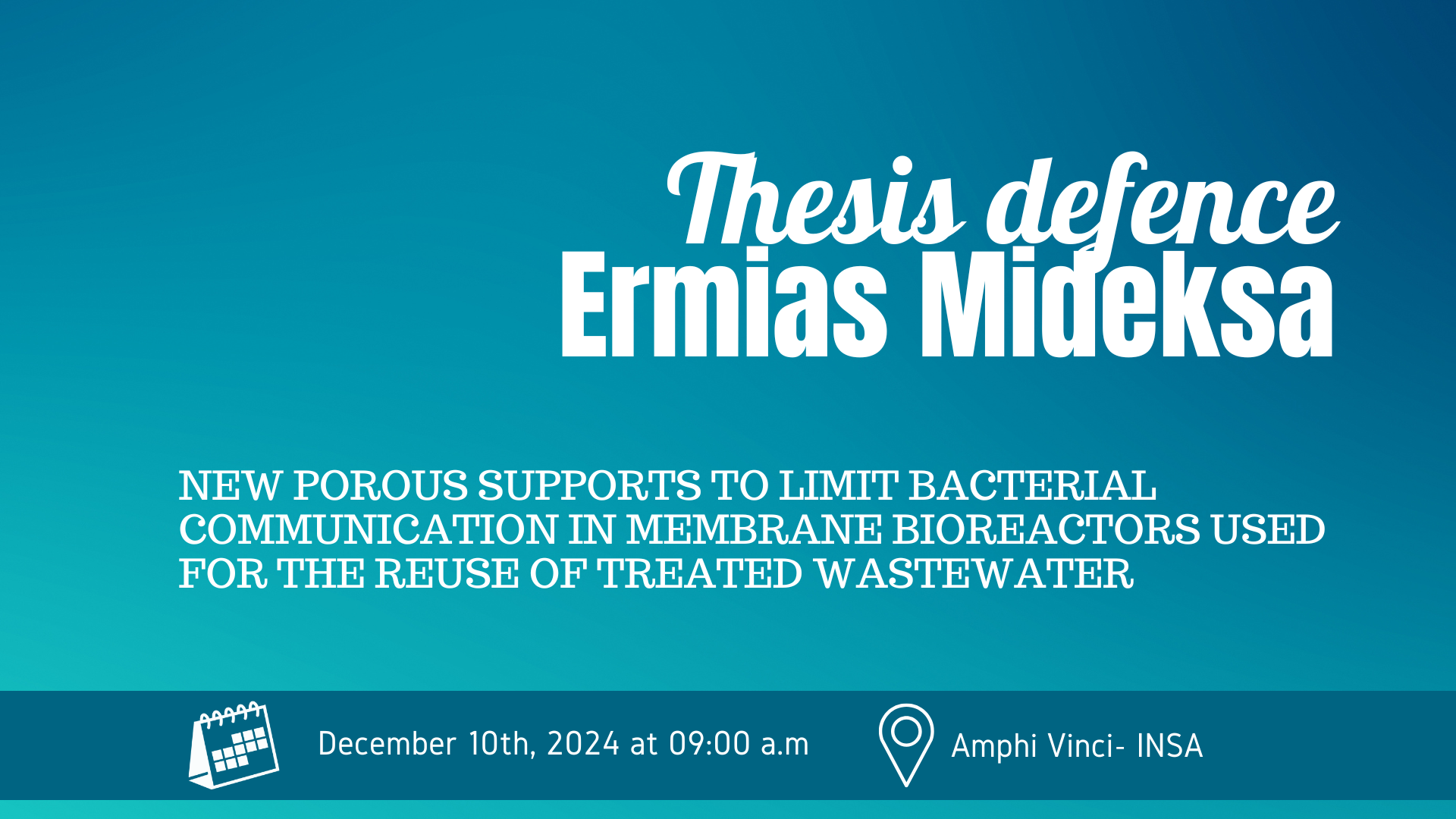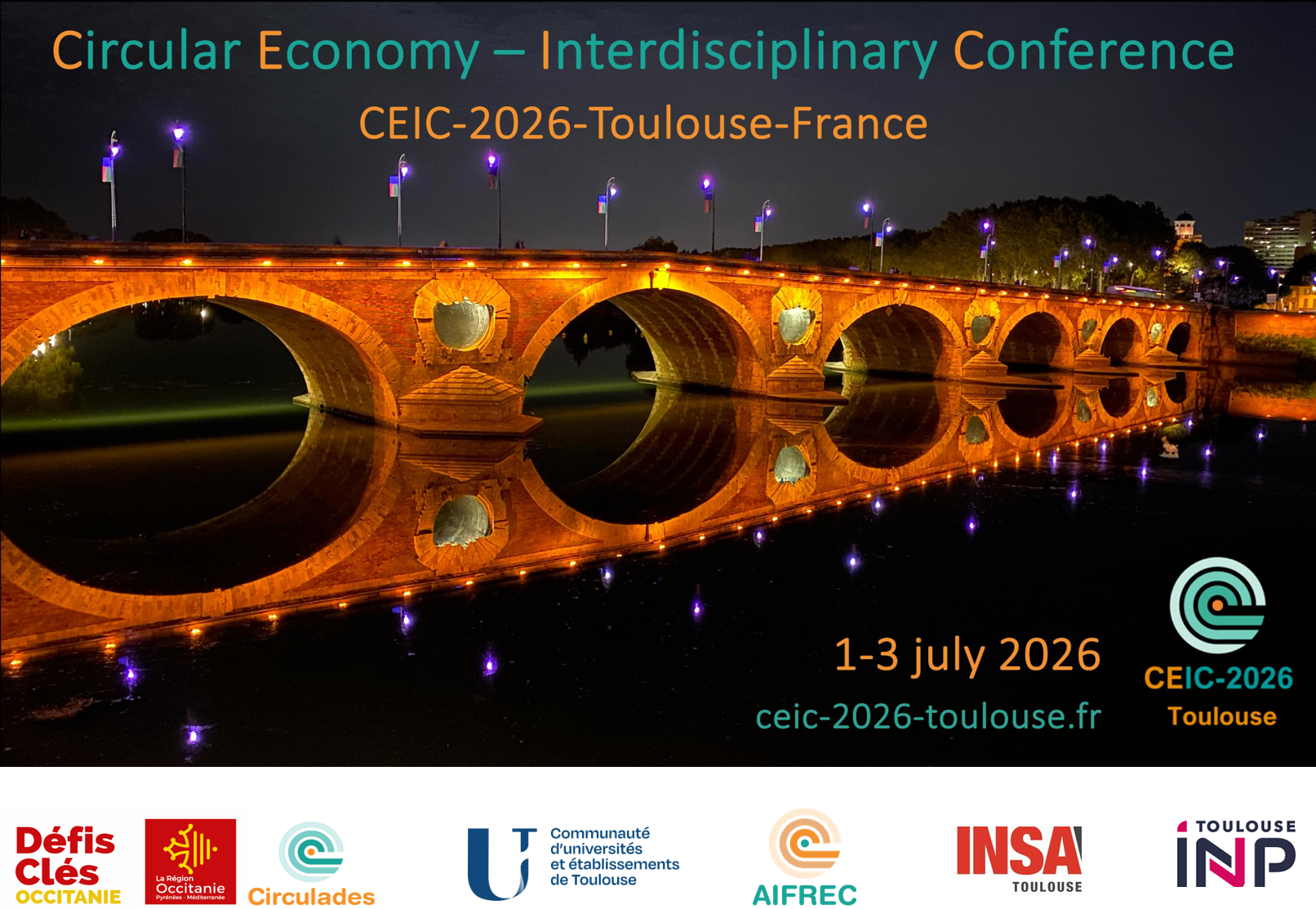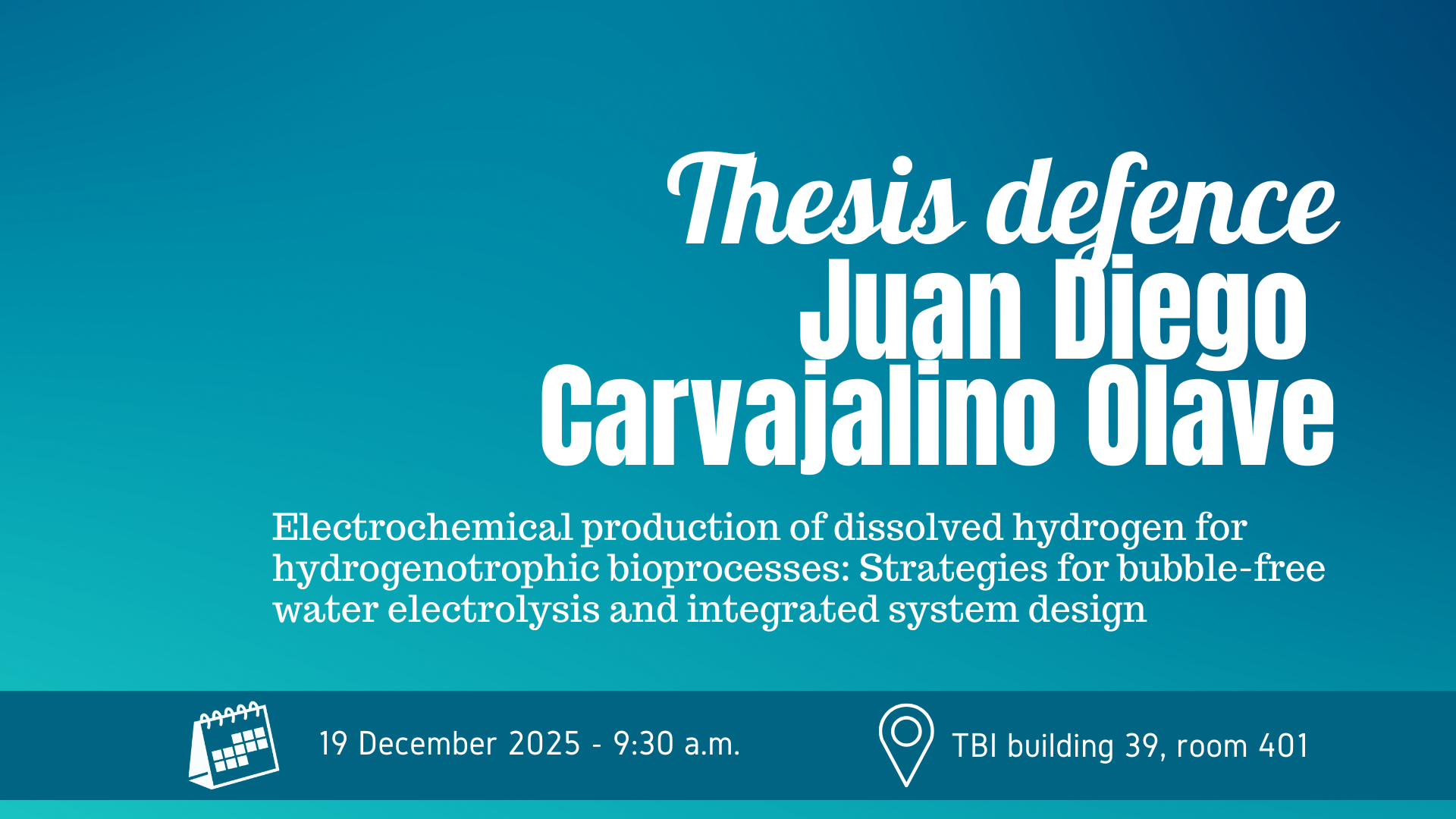Title: NEW POROUS SUPPORTS TO LIMIT BACTERIAL COMMUNICATION IN MEMBRANE BIOREACTORS USED FOR THE REUSE OF TREATED WASTEWATER
Date: DECEMBER 10, 2024 (Amphi Vinci, INSA Toulouse)
ABSTRACT
Quorum Quenching (QQ) has recently emerged as an innovative membrane biofouling mitigation approach in Membrane Bioreactors (MBRs). QQ limits the development and deposition of biofilm on the filtration membrane through inhibition of Quorum Sensing (QS) molecules known as N-Acyl homoserine lactones (AHLs), molecules responsible for having been used by gram-negative bacteria in wastewater for cell-to-cell communication. QQ uses porous polymer solid materials (QQ-media) composed of poly (vinyl alcohol) (PVA) and sodium alginate (SA) to entrap endo- and exo-enzyme-secreting QQ bacteria such as Rhodococcus sp.BH4 and Pseudomonas sp.1A1 that can effectively degrade AHLs. With this scope, the primary focus of this thesis was to develop and report new QQ beads and sheet formulations composed of PVA and SA, addressing internal diffusion limitation of AHL molecules and the toxic crosslinking process reported in the literature, followed by a comprehensive characterization of their physicochemical properties and AHL adsorption capacity. The second objective was to entrap the QQ bacteria, Rhodococcus sp. BH4, within selected QQ media shapes and formulations, investigate the QQ activity. The third objective was to examine the mass transfer of molecules involved in QQ, considering differences in QQ activity based on the entrapped bacterial strain type, media shape, and formulation. Using a dye tracer molecule that mimics AHLs, an extensive mass transfer characterization was performed to and from the QQ media at the same surface area. The impact of QQ media shape and formulation was investigated by analyzing transfer flux and mass transfer coefficient in Airlift MBRs (AL-MBRs).
QQ beads with unique finger-like pores, prepared using a new crosslinking method, significantly enhanced AHL molecule adsorption capacity by improving access to their internal section. Similarly, QQ sheets fabricated through a novel one-step crosslinking process, avoiding toxic agents like boric acid, exhibited superior mechanical strength and AHL adsorption capacity. Following the entrapment of Rhodococcus sp. BH4, the QQ beads with finger-like pores, and the QQ sheets prepared without toxic crosslinkers showed improved AHL degradation compared to beads with densely interconnected structures and sheets crosslinked with boric acid. Under the same fluidized surface area conditions in ALMBRs, QQ sheets achieved higher transfer flux and mass transfer coefficients compared to QQ beads. In summary, this study advances the understanding of the preparation and characterization of novel QQ beads and sheets, offering valuable insight into optimizing fabrication processes, enhancing the physicochemical properties of QQ media, and elucidating the impact of QQ media shape on mass transfer in ALMBRs.
Key-words: Membrane Bioreactors, Mass transfer, Quorum Quenching, QQ beads, QQ sheets
- Mme Christelle Guigui, Co-directrice de thèse, PU, INSA Toulouse, TBI
- Mme Audrey Tourrette, Co-directrice de thèse, PU, Université Toulouse III, Cirimat
- Mme Johanne Teychene, Co-encadrante de thèse, MCF , INSA Toulouse, TBI
Rapporteurs:
- Mme Christelle Wisniewski, PU, Université de Montpellier, UMR Qualisud
- M. Guillaume Conzatti, MCF-HDR, Université de Strasbourg , Regenerative NanoMedcine
Examiners:
- M. Patrick Loulergue, MCF-HDR, Université de Rennes, Institut des Sciences Chimiques de Rennes
- M. Geoffroy Lesage, MCF, Université de Montpellier, Institut Européen des Membranes
- M. Jean-Christophe Remigy, PU, Université Toulouse III, Laboratoire de Génie Chimique.
